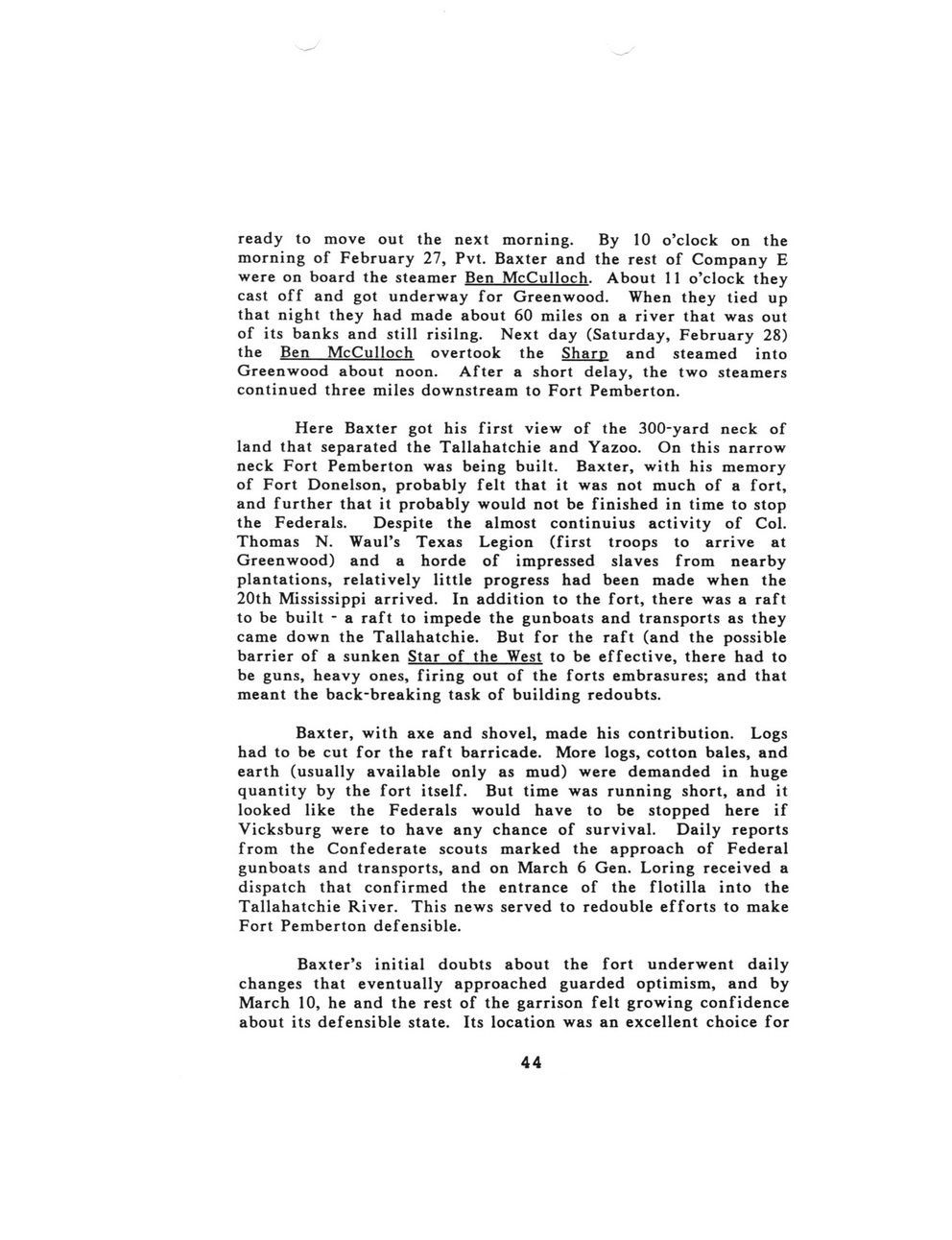This text was obtained via automated optical character recognition.
It has not been edited and may therefore contain several errors.
ready to move out the next morning. By 10 o?clock on the morning of February 27, Pvt. Baxter and the rest of Company E were on board the steamer Ben McCulloch. About 11 o?clock they cast off and got underway for Greenwood. When they tied up that night they had made about 60 miles on a river that was out of its banks and still risilng. Next day (Saturday, February 28) the Ben McCulloch overtook the Sharp and steamed into Greenwood about noon. After a short delay, the two steamers continued three miles downstream to Fort Pemberton. Here Baxter got his first view of the 300-yard neck of land that separated the Tallahatchie and Yazoo. On this narrow neck Fort Pemberton was being built. Baxter, with his memory of Fort Donelson, probably felt that it was not much of a fort, and further that it probably would not be finished in time to stop the Federals. Despite the almost continuius activity of Col. Thomas N. Waul?s Texas Legion (first troops to arrive at Greenwood) and a horde of impressed slaves from nearby plantations, relatively little progress had been made when the 20th Mississippi arrived. In addition to the fort, there was a raft to be built - a raft to impede the gunboats and transports as they came down the Tallahatchie. But for the raft (and the possible barrier of a sunken Star of the West to be effective, there had to be guns, heavy ones, firing out of the forts embrasures; and that meant the back-breaking task of building redoubts. Baxter, with axe and shovel, made his contribution. Logs had to be cut for the raft barricade. More logs, cotton bales, and earth (usually available only as mud) were demanded in huge quantity by the fort itself. But time was running short, and it looked like the Federals would have to be stopped here if Vicksburg were to have any chance of survival. Daily reports from the Confederate scouts marked the approach of Federal gunboats and transports, and on March 6 Gen. Loring received a dispatch that confirmed the entrance of the flotilla into the Tallahatchie River. This news served to redouble efforts to make Fort Pemberton defensible. Baxter?s initial doubts about the fort underwent daily changes that eventually approached guarded optimism, and by March 10, he and the rest of the garrison felt growing confidence about its defensible state. Its location was an excellent choice for 44

Baxter, Marion Francis Marion-Francis-Baxter-Bio.-044